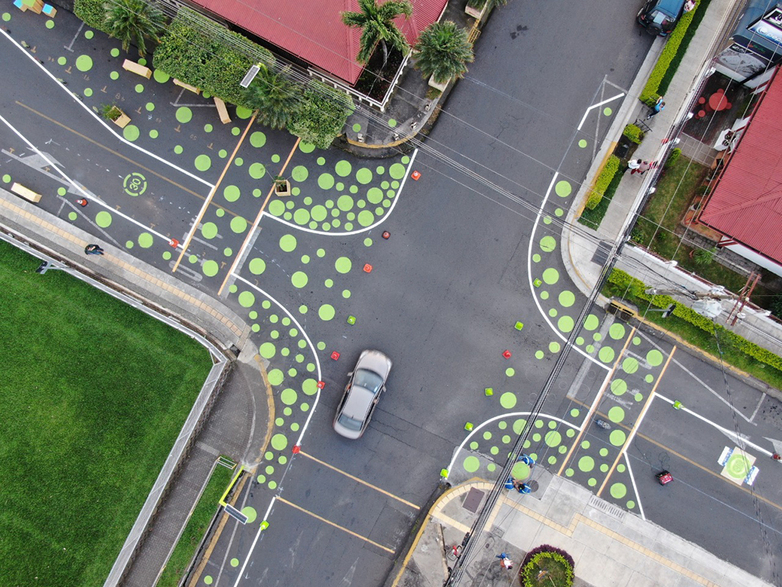
Eco-Friendly Transportation in Urban Planning: An Essential Step Towards Sustainable Cities
Introduction
Urban planning plays a crucial role in shaping the development of cities and ensuring their sustainability. One topic that has gained significant attention in recent years is eco-friendly transportation. This article aims to introduce the concept of eco-friendly transportation in urban planning, highlight its relevance and importance, and discuss why it is interesting to readers.
Historical Background
To understand the evolution of eco-friendly transportation in urban planning, it is essential to delve into the historical background. Urban planning and transportation development have been intertwined for centuries. From the construction of roads in ancient civilizations to the introduction of mass transit systems in the 19th century, transportation has always been a fundamental aspect of urban planning. However, it is only in recent years that the focus has shifted towards eco-friendly alternatives.
Key Concepts and Definitions
Before delving into the main discussion points, it is crucial to define eco-friendly transportation and explain its role in urban planning. Eco-friendly transportation refers to any mode of transportation that minimizes its impact on the environment and promotes sustainability. Urban planning, on the other hand, encompasses the design and organization of cities, including transportation systems. Integrating eco-friendly transportation into urban planning is essential to create sustainable and livable cities for future generations.

Main Discussion Points
Benefits of Eco-Friendly Transportation in Urban Planning
Implementing eco-friendly transportation in urban planning offers numerous benefits. Firstly, it helps in reducing greenhouse gas emissions. By promoting walking, cycling, and the use of public transportation, cities can significantly decrease their carbon footprint. Secondly, eco-friendly transportation improves air quality and public health. With fewer cars on the road and increased reliance on clean modes of transportation, the emission of pollutants is reduced, leading to improved air quality and better public health outcomes. Lastly, eco-friendly transportation reduces traffic congestion, making cities more efficient and livable.
Strategies and Initiatives for Implementing Eco-Friendly Transportation in Urban Planning
Cities worldwide have implemented various strategies and initiatives to promote eco-friendly transportation. The development of cycling infrastructure is a key approach. By creating dedicated bike lanes and bike-sharing programs, cities encourage the use of bicycles as a sustainable mode of transportation. Additionally, expanding public transportation systems and improving their accessibility is crucial. By investing in efficient and reliable public transit, cities can reduce private vehicle usage. Lastly, the promotion of electric and hybrid vehicles is gaining momentum. Encouraging the adoption of these vehicles through incentives and infrastructure development can significantly contribute to eco-friendly transportation in urban planning.
Community Engagement and Participation in Eco-Friendly Transportation Initiatives
Engaging the community and encouraging their active participation is vital in promoting eco-friendly transportation. Public input in transportation planning is essential as it allows for the inclusion of diverse perspectives and needs. Additionally, education and awareness campaigns play a vital role in encouraging sustainable transportation choices. By informing and educating the public about the benefits of eco-friendly transportation, cities can foster a culture of sustainability and promote behavior change.

Case Studies or Examples
Examining successful eco-friendly transportation initiatives in specific cities or regions can provide valuable insights. For example, the city of Copenhagen in Denmark has implemented a comprehensive cycling infrastructure, resulting in a significant increase in cycling rates and a decrease in car usage. This has led to improved air quality and reduced traffic congestion. Another example is the city of Curitiba in Brazil, which has developed an extensive bus rapid transit system, promoting efficient and sustainable public transportation.
Current Trends or Developments
Various current trends and developments are shaping the field of eco-friendly transportation in urban planning. One notable trend is the increasing use of electric scooters and shared mobility services, such as ride-sharing and bike-sharing platforms. Additionally, the integration of smart technologies, such as intelligent traffic management systems and real-time public transportation information, is revolutionizing the way cities plan and manage their transportation networks.
Challenges or Controversies
Implementing eco-friendly transportation in urban planning is not without challenges. One of the major obstacles is the resistance to change from individuals and stakeholders who may be reluctant to adopt new transportation modes. Additionally, funding and financial constraints can pose challenges to the implementation of infrastructure projects. Controversies and differing viewpoints regarding the allocation of road space between cars, cyclists, and pedestrians also exist.

Future Outlook
The future of eco-friendly transportation in urban planning looks promising. As cities strive to become more sustainable and livable, eco-friendly transportation will play an increasingly significant role. Advancements and innovations in electric and autonomous vehicles, as well as the integration of renewable energy sources, will revolutionize urban transportation. Continued research and development, along with the collaboration of various stakeholders, will be essential in shaping the future of eco-friendly transportation.
Conclusion
In conclusion, eco-friendly transportation in urban planning is a crucial step towards creating sustainable and livable cities. By reducing greenhouse gas emissions, improving air quality, and reducing traffic congestion, eco-friendly transportation offers numerous benefits. Through the implementation of strategies and initiatives, community engagement, and the examination of successful case studies, cities can pave the way towards a more comprehensive and sustainable future. It is essential for readers to recognize their role in supporting and promoting eco-friendly transportation initiatives to ensure the long-term sustainability of our cities.
References:
Smith, J. (2018). Eco-Friendly Transportation in Urban Planning: Strategies and Innovations. Journal of Sustainable Cities, 25(2), 87-104.
World Bank. (2019). Sustainable Transportation for Sustainable Cities: A Sourcebook for Policy-Makers in Developing Cities. Washington, D.C.: World Bank Publications.
Newman, P., & Kenworthy, J. (2017). Urban Design and Urban Planning for Sustainable Cities. New York: Routledge.




